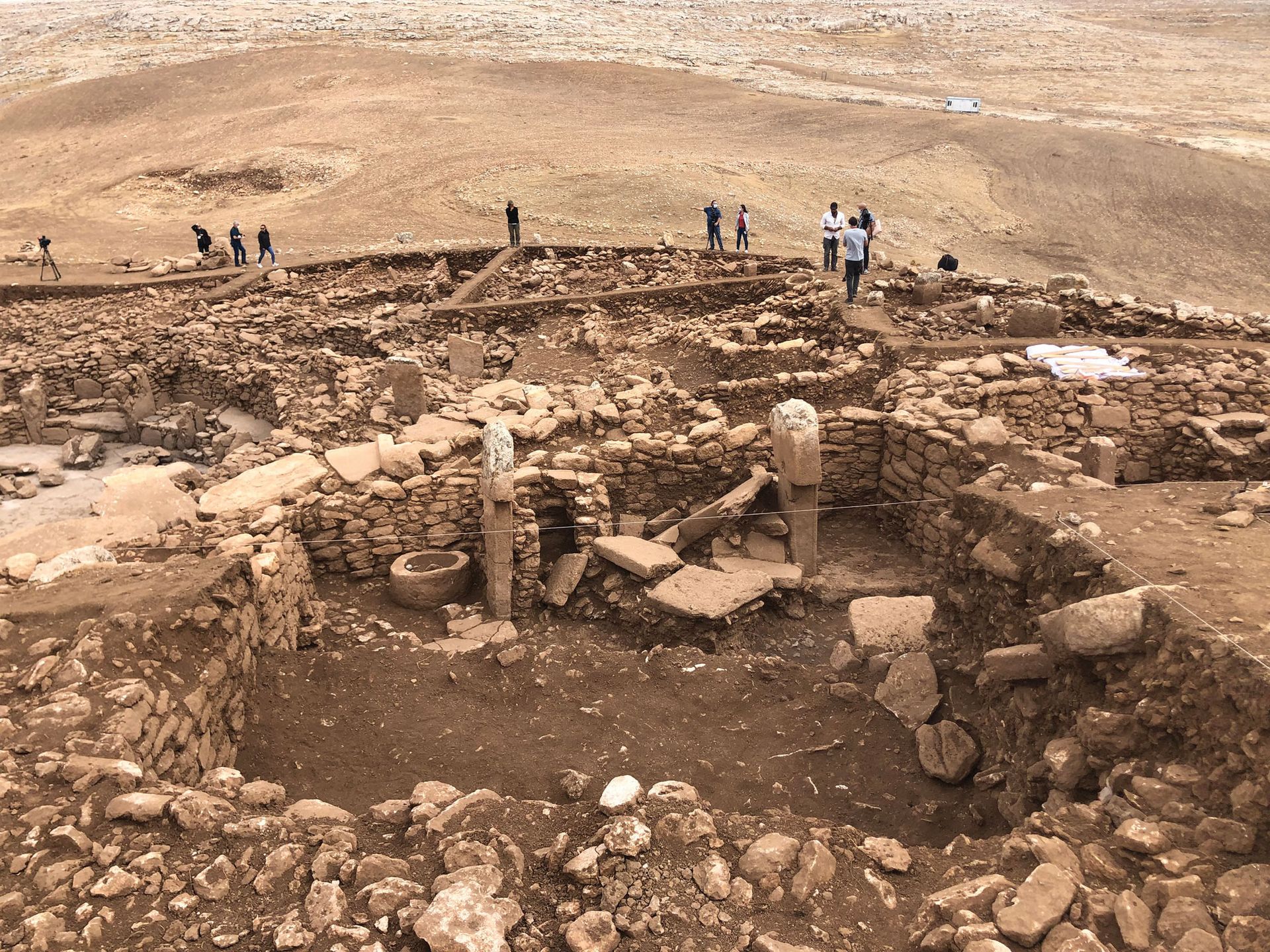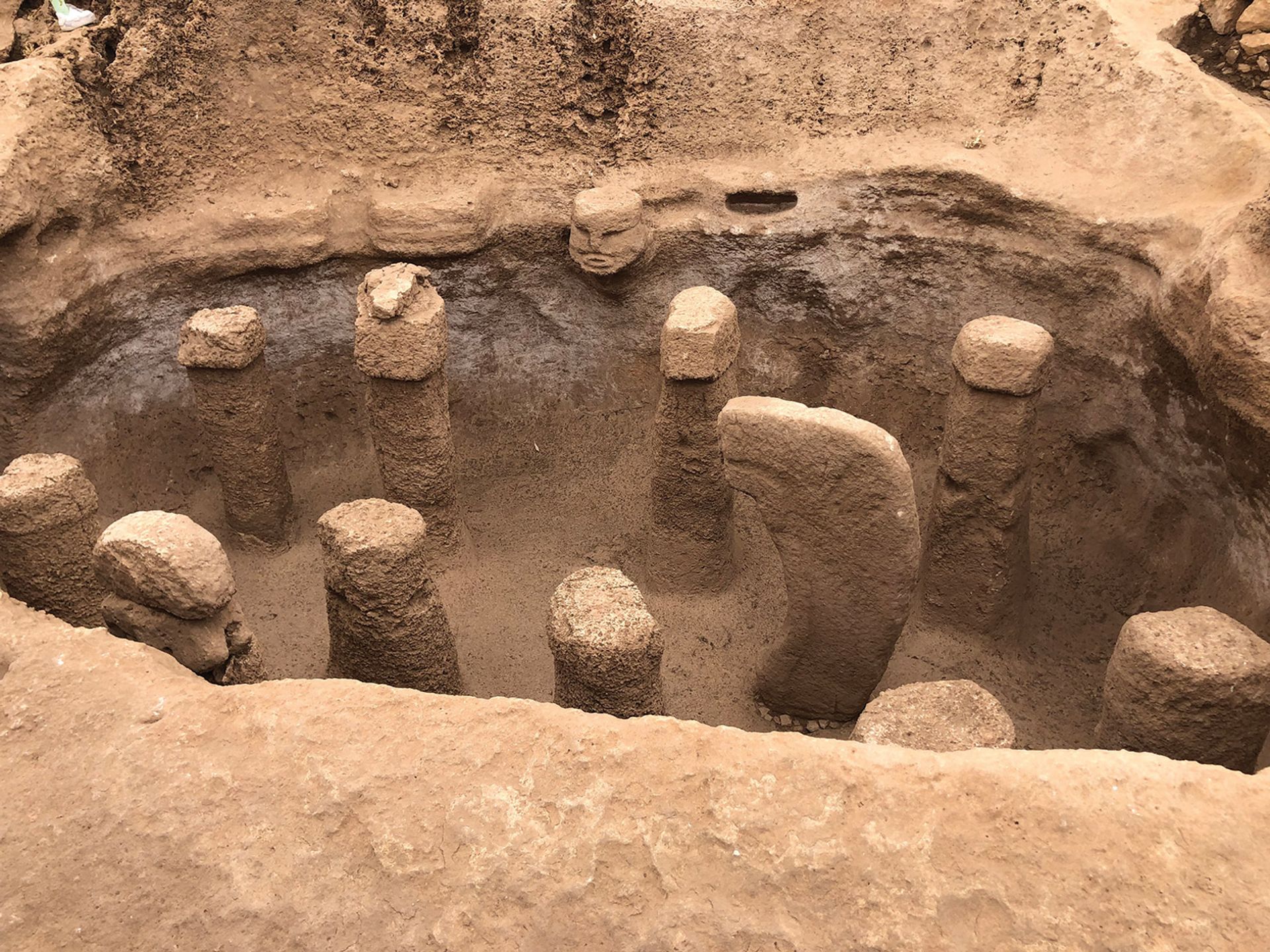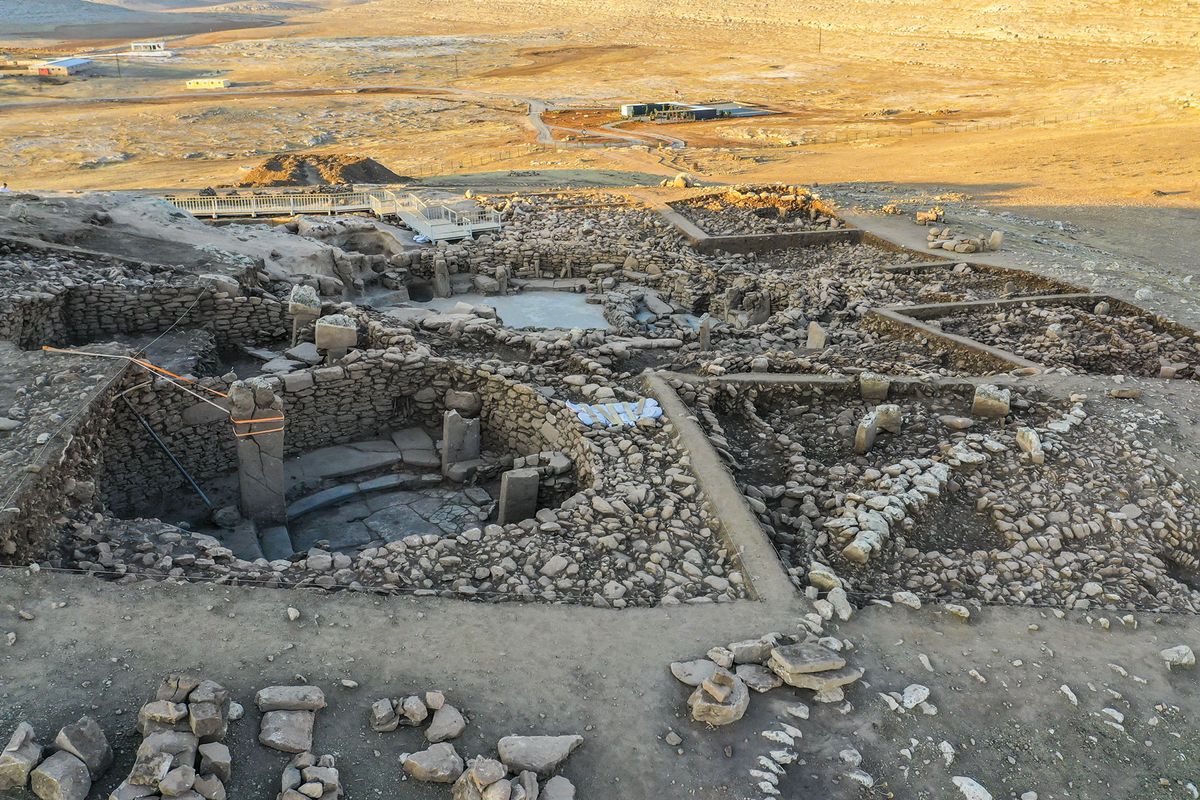Turkey is hailing the discovery of an 11,400-year-old monumental site as one of the world’s oldest villages, challenging the prevailing science on when and why humankind first settled down.
Karahan Tepe, the first of a dozen prehistoric sites to be excavated by Turkish authorities in the south-eastern province of Sanliurfa near the Syrian border, includes homes within a vast ritualistic complex that demonstrates that hunter-gatherers built permanent settlements long before the advent of agriculture 10,000 years ago.
“Now we have a different view on history,” says Necmi Karul, an associate professor of prehistory at Istanbul University who is leading the dig at Karahan Tepe, a site carved into the slope of a hill on a high limestone plateau between the Tigris and Euphrates rivers.
“Our findings change the perception, still seen in schoolbooks across the world, that settled life resulted from farming and animal husbandry,” he said at a September presentation of the site. “This shows that it begins when humans were still hunter-gatherers and that agriculture is not a cause, but the effect, of settled life.”

Necmi Karul, an associate professor of prehistory at Istanbul University who is leading excavations at Karahan Tepe Photo: Ayla Jean Yackley
Sacred and secular spaces were built simultaneously at Karahan Tepe, where humans dwelled year-round for about 1,500 years, and no remnants of farmed vegetation have been found.
Karahan Tepe is located around 35km from the Unesco World Heritage site Göbekli Tepe, billed as home to the world’s oldest temple structures. Dating to 9600BC, Göbekli Tepe reshaped ideas about early civilisation when field research led by the German archaeologist Klaus Schmidt was published in the mid-2000s.
Previously thought to be a lone destination where nomadic people came to worship, Göbekli Tepe is now considered part of a constellation of contemporaneous settlements that extends over 100km and includes Karahan Tepe and at least 11 other unexcavated sites. Recent work has also revealed domestic structures at Göbekli Tepe. “In this region, we encounter monumental structures for the first time in the oldest villages of the world,” Karul says.

Karahan Tepe is part of a constellation of prehistoric settlements that extends over 100km, including the Unesco World Heritage site Göbekli Tepe Photo: Ayla Jean Yackley
Disrupting conventional thinking
Scientists long believed that the domestication of plants and animals around 10,000 years ago is what compelled humans to adopt a sedentary lifestyle and that the boom in food production allowed them to develop complex societies and lay the foundations of civilisation.
But the mounting evidence that Stone Age people built permanent structures for spiritual, rather than strictly essential, pursuits is disrupting conventional thinking that they lacked a large-scale society with division of labour and shared ritualistic motifs.
“It will take time for the scientific community to digest and accept this game-changing research,” says Mehmet Özdoğan, the professor emeritus of archaeology at Istanbul University. “We must now rethink what we knew—that civilisation emerged from a horizontal society that began raising wheat because people were hungry—and assess this period with its multi-faceted society.”
The Neolithic era, coinciding with the end of the Ice Age, marks humankind’s dramatic shift from foraging to farming. “The foundations for today’s civilisation, from family law to inheritance to the state and bureaucracy, were all struck in the Neolithic period,” Özdoğan says.
Karahan Tepe’s circular rooms were planned out in advance, and “the very skilful processing of bedrock reveals an impressive prehistoric architectural engineering”, Karul says. “Building multiple structures with different purposes is the reflection of a complicated belief system. It’s not possible to talk about religion in its true sense, but we see a set of distinct, limited rituals that are radically set forth.”
This is manifested in a chamber that contains what Karul called “one of the most monumental and earliest examples of phallic symbolism”: 11 giant penises carved from the bedrock and watched over by a bearded head with a serpent’s body that emerges from the wall. Karul has deduced that the space, which includes a separate entrance and exit and a channel for water, was used for rites of passage.

One chamber features 11 giant penises carved from bedrock—one of the earliest examples of phallic symbolism Photo: Ayla Jean Yackley
Almost entirely absent are female figures. Stone reliefs of wildlife range from insects to mammals and include attacking beasts gripping men’s heads. There are more depictions of humans than in the menagerie found at Göbekli Tepe, which is around 200 years older, indicating that humans had begun to see themselves as distinct from the animal world, Karul says. Scores of T-shaped stelae—an abstract rendering of the human form—have been unearthed at Karahan Tepe.
Archaeologists have excavated around 1% of the 60,000 sq. m site since 2019, working in record time as remote university instruction during the pandemic extended dig seasons.
While excavations continue, Turkey could open Karahan Tepe to tourists next year, according to the culture minister Mehmet Nuri Ersoy. The government eventually hopes to attract five million visitors a year to Göbekli Tepe and the string of Neolithic sites, which it has dubbed Taş Tepeler, meaning Stone Hills. It is investing around $14m to expand excavations to as many as 30 sites in the area and to build a Neolithic research centre, Ersoy said in September, although no timescale for the projects has been announced.
At the end of Karahan Tepe’s life span, its inhabitants painstakingly buried their temples “as you would a person who has died”, Karul says. He acknowledges the risks of reopening the site now to millions of people, but says: “Everybody has a right to access these archaeological sites.”


